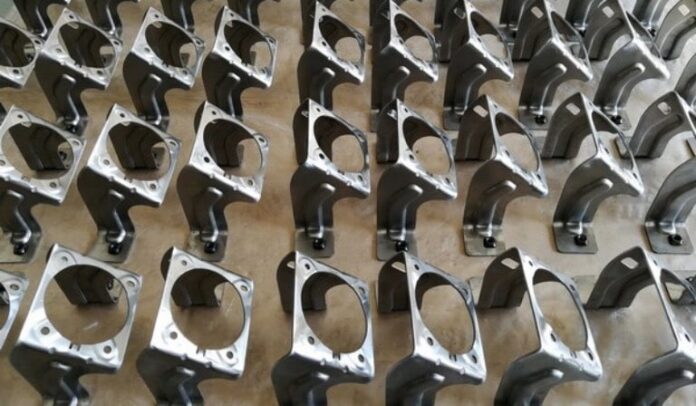Preparation for CNC Milling
The Chinese machine tool industry demands stringent standards, not only for the quality of various parts but also for the strict adherence to milling machine operation protocols. During CNC milling services, human intervention should be minimized, and thorough preparations should be made.
Clean the Workbench and Fixtures
Despite the primary reliance on mechanical equipment in CNC milling, numerous operators still assist in production. To ensure the health and safety of personnel and reduce equipment malfunctions, it is essential to maintain cleanliness on-site.
The milling process generates sharp metal chips, which, if not promptly cleaned, can injure operators. Furthermore, metal chips left on the workbench for extended periods can affect product precision. Regular cleaning can effectively prevent such issues.
In addition to the workbench, fixtures must also be cleaned thoroughly. Areas like jaws, bases, and clamps easily accumulate fine metal debris. If not promptly addressed, this can reduce production precision during subsequent use. Protrusions on these fixtures can degrade their performance, leading to product scrap or rework, causing economic losses and disrupting production schedules.
Inspect Blanks
The precision of blanks directly impacts machining accuracy. The primary focus during the inspection is identifying any part damage. If damaged parts are found, they should be replaced immediately.
By adhering to these preparation steps, CNC milling operations can achieve higher efficiency, safety, and precision, ensuring smoother production processes.
Analysis of Workpiece Clamping and Positioning in CNC Milling
Before production, a CNC milling machine should place the workpiece on the corresponding fixture or machine bed and secure it to prevent displacement due to vibrations during processing. To enhance efficiency, operators should be proficient in handling the equipment to achieve accurate clamping in one go.
If the initial clamping is unsuccessful, timely adjustments are necessary. However, manual adjustments can be imprecise, slow, and somewhat dangerous, so such situations are ideally avoided in actual production.
Determining CNC Milling Tool Selection and Cutting Parameters
Both tool selection and cutting parameters significantly affect machining outcomes. Additionally, the choice of tools during transport operations impacts machining accuracy. Therefore, selecting tools must be approached from a machining perspective. For CNC milling machines, the tools used must offer high precision, strength, rigidity, durability, easy installation, and adjustability.
During machining, the specific requirements of the workpiece dictate tool selection. Generally, tool selection involves combining the tool’s geometric parameters with those of the workpiece. For enclosed key slots, this method is less effective, requiring the use of key slot cutters instead. For fine finishing, four-edge inserts are preferable.
When determining cutting parameters, it is crucial to identify the main influencing factors, such as cutting volume, cutting speed, and spindle speed. Tool life is also an important consideration, divided into two types: minimum economic life and maximum operational life.
Many manufacturing companies prioritize economic efficiency when accepting orders. However, if production deadlines are tight, optimal cutting power becomes the primary criterion.
Selection of CNC Milling Tools and Approach Methods
To fully enhance machining quality in CNC milling operations, tool paths must not be overlooked, as they directly impact the process’s effectiveness. When selecting tool paths, machining accuracy, and external surface roughness are critical factors. To ensure optimal machining outcomes, tool paths should be shortened as much as possible, reducing idle cuts.
When connecting two adjacent tool paths with a ramp, the radius of the arc should be increased to avoid direct intersections. This allows the tool to track the next machining path automatically.
If the tool paths are the same, adjustments should be made to the arc radius to maintain continuous motion. This approach not only ensures smooth tool paths but also reduces resistance during tool operations, minimizing tool wear.
The arc transition process is particularly effective, as it facilitates tangent machining of the workpiece, significantly improving CNC milling quality. The range of approach methods is relatively limited, typically involving either longitudinal or helical approaches. Longitudinal approaches cause greater tool damage due to higher cutting forces compared to helical approaches.
Thus, in practical production, the helical approach is more frequently chosen. When using this approach, it is crucial to scientifically set cutting parameters and reasonably determine the diameter of the screw. Additionally, standardizing operational procedures is essential to prevent tool damage caused by improper operations or unreasonable practices.
